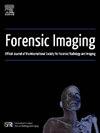The sternum as a key to identity: enhancing biological profiling in forensic science
IF 1
Q4 RADIOLOGY, NUCLEAR MEDICINE & MEDICAL IMAGING
引用次数: 0
Abstract
Purpose
Forensic anthropometry focuses on the precise measurement and analysis of human skeletal elements, which is crucial for constructing biological profiles in forensic investigations. This examination specifically looks at the forensic applications of the sternum, concentrating on its role in estimating sex, stature, and age.
Method
The review emphasizes the importance of the combined length of the manubrium and sternal body for accurate estimations of sex and stature, particularly in challenging cases. It explores age estimation based on morphological changes and ossification patterns, noting promising results from some studies. The examination also discusses the integration of digital tools such as 3D imaging and advanced morphometric software to enhance the precision and reliability of sternum-based analyses.
Results
The review highlights the sternum’s benefits for estimating sex and stature, as well as the potential for age estimation. Despite the recognized advantages, it points out gaps in the current research, particularly the lack of studies on ancestry estimation.
Conclusion
The review offers a thorough overview of the sternum’s forensic value and calls for ongoing research to improve accuracy and broaden its application. It underscores the evolving importance of forensic anthropometry, emphasizing how technological advancements are revolutionizing the analysis of skeletal remains and expanding the capabilities of forensic investigators. The findings highlight the necessity of continued research and innovation in refining sternum-based identification methods for forensic and anthropological applications.
胸骨作为鉴定的关键:加强法医科学中的生物侧写
目的法医人体测量学侧重于人体骨骼元素的精确测量和分析,这对于法医调查中构建生物图谱至关重要。这次检查特别关注胸骨的法医应用,集中在它在估计性别、身材和年龄方面的作用。方法本综述强调胸骨柄和胸骨体的长度对于准确估计性别和身高的重要性,特别是在具有挑战性的病例中。它探讨了基于形态变化和骨化模式的年龄估计,注意到一些研究的有希望的结果。研究还讨论了数字工具的集成,如3D成像和先进的形态测量软件,以提高胸骨分析的精度和可靠性。结果该综述强调了胸骨在估计性别和身高方面的益处,以及估计年龄的潜力。尽管具有公认的优势,但它指出了当前研究中的差距,特别是缺乏对祖先估计的研究。结论本文综述了胸骨的法医学价值,并呼吁进一步研究以提高准确性和扩大其应用范围。它强调了法医人体测量学不断发展的重要性,强调了技术进步如何彻底改变了骨骼遗骸的分析,并扩大了法医调查员的能力。研究结果强调了继续研究和创新的必要性,以改进法医和人类学应用的基于胸骨的鉴定方法。
本文章由计算机程序翻译,如有差异,请以英文原文为准。
求助全文
约1分钟内获得全文
求助全文
来源期刊

Forensic Imaging
RADIOLOGY, NUCLEAR MEDICINE & MEDICAL IMAGING-
CiteScore
2.20
自引率
27.30%
发文量
39
 求助内容:
求助内容: 应助结果提醒方式:
应助结果提醒方式:


